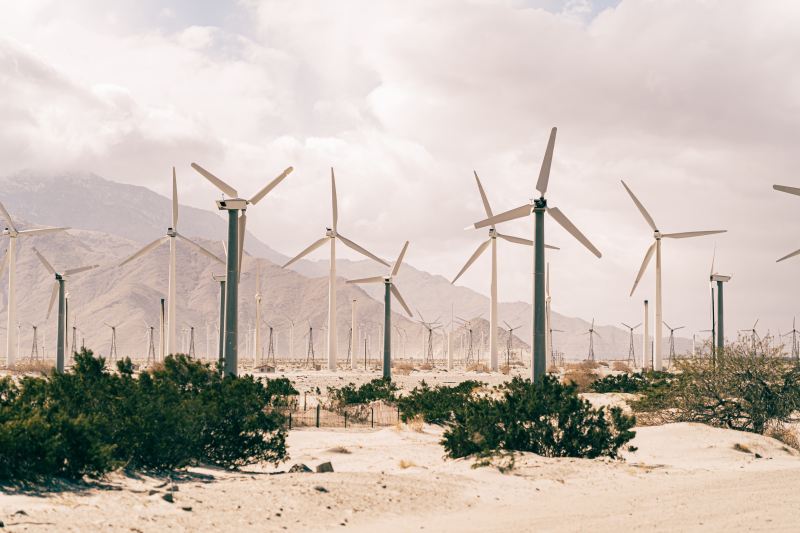Global power market trends
Technological advancements, regulatory changes, Covid-19, and political pressures have all led to significant changes in the power markets all over the world. However, predicting such changes is difficult. The future of both renewable and fossil fuel energy industries has become even hazier as a result of the Coronavirus. For example, the price of oil plummeted to -$37.63 per barrel in April of 2020, and while it has since quickly rebounded to $40, it is impossible to precisely forecast what will happen to the oil industry next. Meanwhile, renewable energy was confronted with its own set of problems - the development, manufacture, and assembly of new installations were placed on pause here and there.
So, what are the global power market trends of the essential industry’s building blocks today?
Because of power generation gains from innovations and the development of renewable energy, the energy intensity of global gross domestic product is anticipated to enhance by 40 % by 2050.
Within the next decade, producing renewable energy will become cheaper than maintain existing fossil facilities. This will result in a significant increase in solar photovoltaics and wind power deployed. Over 70 % of the predicted rise in world energy consumption is estimated to come from developing countries. Advanced economies' energy usage, on the contrary, is anticipated to drop by 3 % from pre-COVID levels.

Non-renewable fuel sources demand will also grow considerably in 2021. This projected rise would negate eighty percent of the reduction in the greenhouse gas emissions of the previous year.
Starting from 2021, a 6.2 % yearly raise is predicted for global oil demand. Gradually returning to pre-COVID levels of oil consumption will increase greenhouse gas emissions by 1.5 percent.
The use of coal is estimated to boost by 4.5 % this year, with Asia accounting for more than 80 percent of the increase. China is expected to contribute to more than half of the coal consumption global growth. As for natural gas, its demand will presumably upsurge by 3.2 percent in 2021, owing to Asia and the Middle East.
The global electricity demand will reach its highest rate. Throughout 2021, it is expected to exceed the total figure of more than 23,000 TWh today by approximately 1,188 TWh. Over 80 % of demand growth in 2021 will be accounted for by emerging countries.
Renewable energy remains this period's big success. Renewables are projected to account for more than half of the growth in the global power supply. In the current year, China will most probably generate around 900 TWh from solar and wind energies, while the European Union is expected to generate roughly 580 TWh up to the end of this year. Moreover, as the rush to reach 2030 objectives heats up in Europe, 2021 is shaping up to be a milestone year for European renewable auctions.

The European Union countries, as well as Great Britain, Japan, South Korea, and China have announced net-zero emissions objectives in the meanwhile. Some large power providers have also stated their desire to reach net-zero emissions standards, but long-term plans to do so remain hazy.
Energy demands on the global level will continue to rise constantly, according to long-term forecasts. Urban growth, improved access to energy sources, and higher living standards will drive increasing energy consumption in emerging countries. By 2040, global energy consumption is expected to increase by 20 %, of which India and China will account for almost half.
The “Internet of Energy” (IoE is a technological term that is used to define automation of energy infrastructures in order to get more efficient and clean energy production) together with energy decentralization will remain the biggest digital power market trend. In the not-too-distant future, the move from a traditional model of distributing electricity to the one in which consumers are also producers will enhance the position of decentralization. It also might play a significant role in reducing the industry's carbon emissions. In turn, IoE will offer higher efficiency and optimal design for building energy systems. Through energy exchanges between its users, the Internet of Energy will enable smart distributed control. These new energy-generating patterns will enhance energy system coordination and optimization.

As nations throughout the world recover from the effects of Covid-19, develop, and get access to new technologies, increased energy usage, and CO2 emissions are predicted at the global level. In addition, the power industry will experience an increase in the number of startups that deal with renewables, energy storage, energy efficiency solutions, or even energy trading platforms.
This article merely scratches the surface of what is happening on the global energy market right now. Biofuels, smart grids, and power transmission innovations are just a few of the technologies that will drastically alter the energy industry as we know it today.
